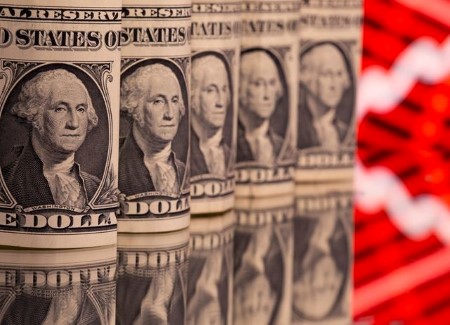




Philippines Trade Update: Exports momentum continues
 DOWNLOAD
DOWNLOAD

Quarterly Economic Growth Release: More BSP cuts to come
 DOWNLOAD
DOWNLOAD

Monthly Economic Update: Fed catches up
 DOWNLOAD
DOWNLOAD


US yields spike after inflation report, 10-year breaches 4.5%

NEW YORK, April 10 – US Treasury yields spiked on Wednesday after inflation data came in higher than expected, lifting the benchmark 10-year yield to above 4.5%, its highest level since November last year.
US consumer prices increased more than expected in March amid rises in the costs of gasoline and shelter, casting further doubt on whether the Federal Reserve will start cutting interest rates in June.
“We have already seen indications that the market was backing off of any expectation the Fed was going to cut in the first half of the year … now our expectations should be that maybe we get a cut, maybe we get nothing,” said Chris Maxey, managing director and chief market strategist at Wealthspire Advisors.
“I wouldn’t be surprised if we start to see some conversation … around the possibility that they’re going to raise rates later this year,” he said.
The consumer price index rose 0.4% last month after advancing by the same margin in February, the Labor Department’s Bureau of Labor Statistics (BLS) said on Wednesday. In the 12 months through March, the CPI increased 3.5%.
Economists polled by Reuters had forecast the CPI gaining 0.3% on the month and advancing 3.4% on a year-on-year basis.
“Inflation is now fully embedded … This is going to be a long uphill fight, we’re not talking months or quarters, we’re talking years,” said Dean Smith, chief strategist and portfolio manager at FolioBeyond, referring to the Fed’s battle against rising price pressures.
Late on Wednesday, traders were betting on a first cut in September and on less than two cuts this year, below the three 2024 cuts Fed policymakers had projected in March.
Benchmark 10-year yields surged 18 basis points day on day to 4.55%. Two-year yields US2YT=RR, which more closely reflect monetary policy expectations, spiked by about 20 basis points and were last seen at 4.96%, also their highest level since November.
Two and 10-year yields posted their biggest daily gains since March 2023 and September 2022, respectively.
Further out in the curve, 30-year yields gained about 13 basis points to nearly 4.63%.
US President Joe Biden said on Wednesday that despite hotter-than-anticipated inflation he predicted a cut would still happen in 2024. Meanwhile, minutes of the US central bank’s March 19-20 meeting showed Fed officials worried last month that progress on inflation might have stalled.
For Mona Mahajan, senior investment strategist at Edward Jones, while hotter-than-expected inflation complicates the path to lower rates, the long-term story remains one of a cooling economy.
“The direction of travel for the Fed wasn’t just this year, it was two to three years of great moderation. Whether or not we start this year or next year, it remains to be seen,” she said.
She expected higher Treasury yields to make duration – or the idea of buying bonds because of expectations of interest rate cuts – attractive again.
“We think over time the Fed will bring rates to a less restrictive and more neutral stance … so the duration play comes back into play here for investors who maybe had missed the first opportunity,” she said, referring to late last year when benchmark yields touched 5%.
However, in a first test of investor interest for Treasuries, a USD 39 billion auction of 10-year notes tailed on Wednesday, as the Treasury issued the paper at a high yield of 4.56%, some three basis points above the expected rate at the time of the bid deadline, a sign that investors demanded a premium to absorb the debt sale.
The bid-to-cover ratio, a measure of demand, was 2.34 times, the lowest since December 2022.
(Reporting by Davide Barbuscia; Editing by Andrew Heavens, Chizu Nomiyama, Christina Fincher, and Aurora Ellis)
This article originally appeared on reuters.com





 By Reuters
By Reuters